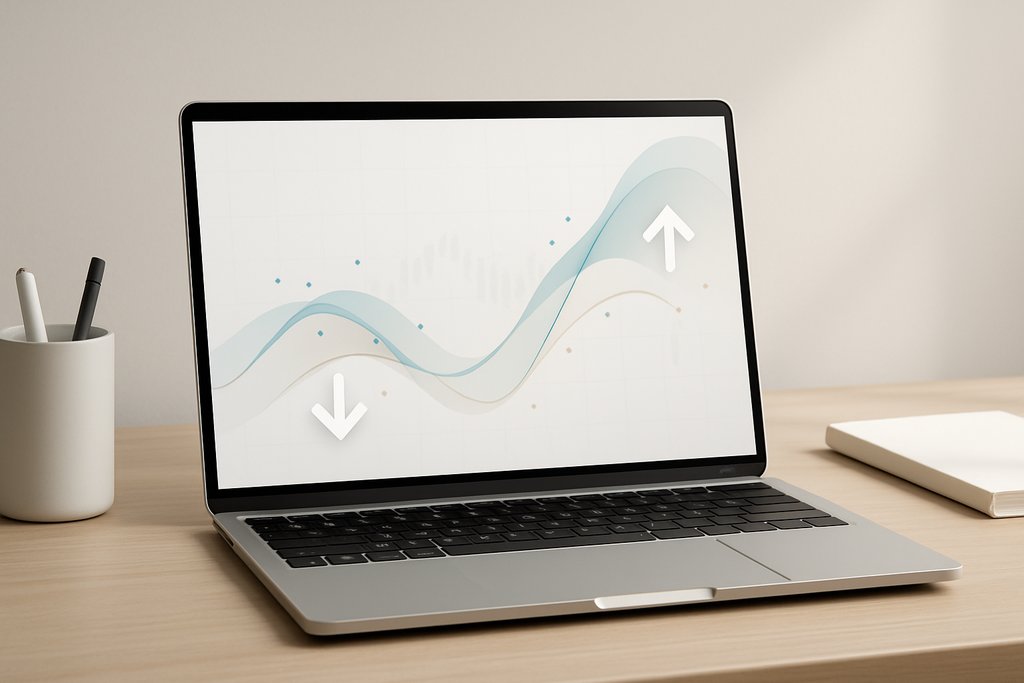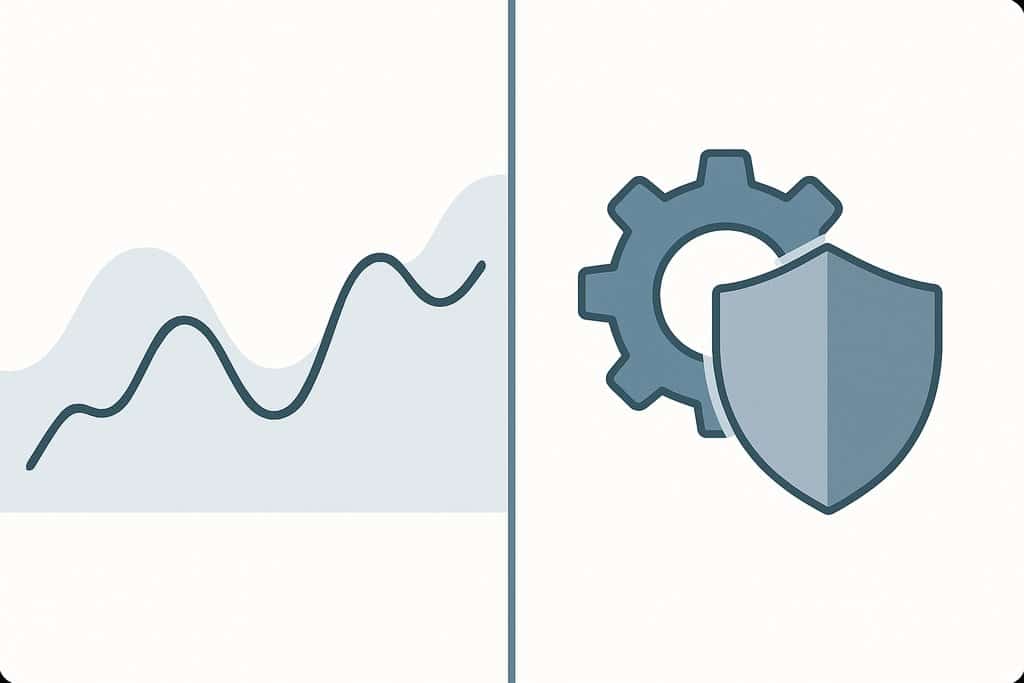Algorithmic Trading Bot: Build, Test, and Automate Safely
Learn what an algorithmic trading bot is, how it works, and how to design, backtest, and deploy automation with clear risk controls. Move from idea to execution fast with modern tools like Obside.

If you searched for an algorithmic trading bot, you likely want to turn clear trading rules into consistent execution without babysitting charts. Maybe you want to remove emotions from entries and exits, or you want a system that reacts to fast markets while you sleep. This guide explains what an algorithmic trading bot is, how it works, how to build or adopt one with confidence, and how to move from backtests to live trading while managing risk intelligently.
Whether you are a discretionary trader curious about automation or a systematic trader seeking better tooling, the goal is the same: give you a practical, expert-level playbook you can apply right away. If you are new to the concept, you can also learn the foundations of trading automation from idea to execution.
What is an algorithmic trading bot?
An algorithmic trading bot is software that executes trading decisions based on predefined rules. Those rules can be as simple as buy when price crosses above the 50-day moving average and sell on a 10 percent trailing stop, or as complex as multi-timeframe conditions with risk-based position sizing, news filters, and volatility-adjusted exits. The key point is that the bot follows logic you specify and acts without hesitation or emotion.
Unlike a signal service that only alerts you, a true algorithmic trading bot can both detect conditions and place or manage orders on your connected broker or exchange. It can also run continuous monitoring, rebalance portfolios, and enforce risk controls like maximum position size, daily stop, and exposure limits.
For a concise primer, read the overview of algorithmic trading on Wikipedia, then come back here for practical implementation details.
How an algorithmic trading bot works in practice
Most bots follow a pipeline. First they ingest data. That can be real-time prices, technical indicators computed from those prices, and optionally event feeds like earnings announcements, economic calendars, or news. Second they evaluate conditions to produce signals: enter long, reduce exposure, trail stops, or do nothing. Third they translate signals into orders while honoring constraints like position sizing, slippage assumptions, and partial fills. Finally they track open positions, update stops and targets, and log everything for analysis and review.
You can think of it as a loop. Every new data point or event prompts a fresh evaluation of your strategy rules. The bot decides whether to act, and if so, it places order types such as limit, market, stop, or bracket orders. Between cycles, it updates your state: current positions, PnL, risk metrics, and upcoming tasks like end-of-day rebalancing.
A robust bot also handles errors gracefully. Data gaps, network hiccups, rejected orders, or exchange outages are part of the real world. Good architecture includes retries, fallbacks, and clear notifications so you stay informed without being chained to your screen.
Build, buy, or co-pilot with natural language
There are three primary paths to an algorithmic trading bot. You can code it from scratch, adopt a configurable platform, or use a co-pilot that converts plain language into executable strategies.
Coding from scratch gives maximal control. You select data vendors, program logic, and integrate brokers via APIs. This suits developers who want custom research stacks, but it requires time and maintenance. Configurable platforms provide templates, indicators, and execution pipelines, which reduce overhead and speed up iteration. The trade-off is that the core engine is managed for you. If you want to compare options and architecture, see our overview of an algorithmic trading platform.
A third option, which is increasingly attractive, is natural language automation. With Obside you describe what you want to do and the Copilot translates that into concrete market actions. Instead of laboring over syntax, you can say things like:
- Alert me if Bitcoin rises above 150,000 dollars and daily volume doubles, then buy 1,000 dollars if the move holds into the hourly close.
- Sell all my positions if the S&P 500 drops by 10 percent intraday.
- Keep 50 percent of the portfolio in Bitcoin, 25 percent in Ethereum, and 25 percent in USDC. Rebalance weekly or when weights drift more than 5 percent.
Obside connects to your brokers and exchanges, monitors markets and events in real time, and can respond to prices, technical indicators, headlines, or macroeconomic data. You can validate ideas in seconds using its ultra-fast backtesting engine, then go live with the same logic.

Obside received the Innovation Prize 2024 at the Paris Trading Expo and is supported by Microsoft for Startups. If you prefer a no-cost starting point, explore our guide to a free trading bot that you can test today.
Designing a robust strategy for your algorithmic trading bot
Before you automate anything, define your objective with precision. Are you targeting intraday mean reversion with frequent small gains, or swing trend following with fewer but larger moves. What is your acceptable maximum drawdown and your target annualized return. Every rule you write should serve these parameters.
Start with a clean hypothesis. For example, volatility contraction often precedes expansion, so a breakout strategy might use a squeeze condition before a moving average cross. Or momentum tends to persist, so a multi-timeframe trend filter can reduce whipsaws. Translate that hypothesis into measurable conditions that your bot can evaluate without ambiguity.
Next, specify entry, exit, and risk. If you enter on a 2-hour Supertrend flip with an 8-hour confirmation, define what happens if price immediately retraces. Decide whether to exit on a stop loss at 2 ATR, switch to a trailing exit at 5 ATR, or both at different phases. Decide how much to risk per trade, and cap your daily loss so a string of losses does not spiral.
Finally, plan operational details. Choose instruments with sufficient liquidity. Specify the timeframe your bot observes. Decide when the bot is allowed to trade and when it must stand down, like during key macro events if your strategy is sensitive to gaps. All of this becomes explicit configuration in your automation.
On Obside you can express these elements in plain language. For example: When the Supertrend becomes bullish on the 2-hour chart, if the RSI is not overbought and the Supertrend on the 8-hour chart is also bullish, then buy. For selling, reverse the logic. Place a trailing stop loss at 5 ATR on the 2-hour chart and close the position if the Supertrend on the 2-hour chart changes direction.
Backtesting, walk-forward validation, and going live
Backtesting is your first line of defense. You run your logic on historical data to estimate performance, understand drawdowns, and spot failure modes. Good backtests account for trading costs, spreads, slippage, and realistic order fills. They also avoid common pitfalls such as:
- Look-ahead bias: using information that was not available at decision time. Confirm signals only after the candle closes if required.
- Leakage: when training and test sets share information. Keep development and out-of-sample periods strictly separated.
- Survivorship bias: testing on today’s constituents only. Use data that reflects actual constituents at each point in time.
After a baseline backtest, use walk-forward validation. Optimize parameters on one window, then lock them and test on the next window without changes. Repeat across multiple windows to gauge stability. A succinct overview of the method is on Wikipedia.
Judge results on more than total return. Pay attention to maximum drawdown, Sharpe and Sortino ratios, profit factor, hit rate, average win to average loss, and the time spent at new equity highs. A strategy with slightly lower returns but smaller drawdowns and fewer long stagnations may be more livable and scalable.

Obside’s backtesting engine is built for speed, so you can iterate quickly and then switch to paper trading to observe live behavior without risking capital. For a broader primer, see the Investopedia overview of backtesting.
Real-world examples and playbooks you can automate
Momentum breakout with regime filter
Suppose you trade crypto on the 2-hour chart, but you only want to trade when the 8-hour trend is aligned. On Obside Copilot you could say: When the 2-hour Supertrend turns bullish and the 8-hour Supertrend is also bullish, and RSI on the 2-hour is below 70, buy. Set a stop loss at the low of the day and a take profit at 10 percent. If price moves in your favor, trail the stop at 5 ATR. The bot will handle entries, exits, and stop updates automatically.
Mean reversion in equities with volatility gate
Equities often revert within ranges, but you want to avoid trending days. You could define: If the S&P 500 opens inside yesterday’s range, ATR is below its 20-day median, and the 5-minute RSI dips below 30 then closes back above 30, buy with a half-size position, exit at VWAP or end of day, whichever comes first. Add a daily loss cap to halt trading after two stop outs.
Event-driven triggers
Some opportunities come from news or macro events, not just price. Obside can listen to event feeds so you can do things like: If Apple announces a new product, alert me and buy a small starter position if the stock is above its 20-day moving average. If new tariffs are announced that impact autos, reduce my exposure to European automakers by 50 percent. If crude oil inventories surprise to the downside and front-month WTI spikes with volume, buy an oil ETF with a tight stop.
Portfolio automation and DCA
Systematic investing is also automation. For example: Buy 50 dollars of Bitcoin every Monday at 10:00 AM. Or maintain a target allocation such as 50 percent Bitcoin, 25 percent Ethereum, and 25 percent USDC. Rebalance weekly, and alert me if volatility spikes so I can tighten risk. The bot enforces the allocation so you do not drift.
Benefits and considerations of using an algorithmic trading bot
The benefits are substantial. An algorithmic trading bot executes faster than a human and never gets tired. It provides discipline by following rules precisely every time, which reduces the impact of fear and greed. It enables diversification across instruments, timeframes, and strategies, which can smooth your equity curve. It also scales across accounts and can trade around the clock on assets like crypto.
- Consistent, emotion-free execution
- Faster reaction to market changes
- Diversification across strategies
- Scales from one account to many
There are important considerations. Data quality matters. Latency and connectivity can affect fills during fast markets. Trading costs and slippage can erode edges that look profitable on paper. Over-optimization can create a curve-fit strategy that collapses out of sample. Black swan events can overwhelm systems that have not planned for extreme volatility. Human oversight remains valuable, so set alerts and dashboards to monitor behavior and performance.
Good platforms help you manage these risks. Obside lets you set portfolio-level controls, daily stops, and exposure caps. You can simulate costs in backtests, switch to paper trading, and define alerting rules for abnormal conditions like a sudden equity drawdown or orders that remain unfilled for too long. For a broader view of tools and vendors, see our guide to automated trading bots.
How to get started in minutes with Obside
Getting a first algorithmic trading bot running is easier than most people expect. Create your account, connect your broker or exchange securely, then open Obside Copilot and tell it what you want to do in clear language. For example: Notify me if RSI crosses 70 on EUR/USD and MACD turns bearish. If that happens during London hours, open a 0.5 percent risk short with a stop above the signal candle and a take profit at 1.5 times risk.
- Create an account and connect your broker or exchange.
- Describe your rules in plain language to Obside Copilot.
- Backtest immediately, then run in paper mode to observe behavior.
- Deploy live with modest sizing and review logs and performance.
Backtest across multiple regimes, watch for failure modes, and iterate on entries, exits, and risk. If you need a broader framework to structure your playbook, explore our trading strategy guide for robust rule design.
Conclusion and next steps
An algorithmic trading bot is not a magic machine that prints money. It is a disciplined executor of good ideas. The better your hypothesis, validation, and risk management, the more your automation can help you compound with consistency.
If you are ready to take the next step, pick one strategy you already trade manually and formalize its rules. Backtest it with realistic costs, then run it in paper. When you feel comfortable, let your bot handle execution while you focus on review and iteration. If you want the shortest path from rules to live trading, try Obside and go from idea to execution in seconds.
Frequently Asked Questions
How much capital do I need to use an algorithmic trading bot?
There is no single threshold. Some strategies scale down to a few hundred dollars, especially on assets with fractional sizing like crypto. Others require more to overcome costs and achieve diversification. Focus on right-sizing position risk as a percentage of capital and test your cost assumptions in backtests and paper trading before committing real funds.
Can an algorithmic trading bot adapt to changing markets automatically?
A bot follows your rules. You can design adaptive logic that uses volatility filters, regime detection, or dynamic position sizing to adjust behavior, but it will not invent new rules on its own unless you implement machine learning or model-switching logic. A pragmatic approach is to build simple adaptations, monitor performance, and periodically retune only if walk-forward results justify it.
Do I need to know how to code to run an algorithmic trading bot?
Not necessarily. Platforms like Obside allow you to describe strategies in plain language, create smart alerts, and automate orders without writing code. If you prefer full control or specialized research, coding your own bot can be useful, but it is no longer a barrier to entry.
How do I prevent overfitting when backtesting my strategy?
Keep your rules simple, limit the number of parameters, and avoid selecting settings solely because they maximized past returns. Use out-of-sample testing and walk-forward validation, include realistic costs, and prefer robustness across instruments and timeframes over perfection on a single dataset.
What performance metrics matter most for algorithmic trading bots?
Beyond total return, consider maximum drawdown, Sharpe and Sortino ratios, profit factor, average win to loss, and time to recovery after drawdowns. These metrics help you judge if a strategy is tolerable to trade and resilient across regimes.
